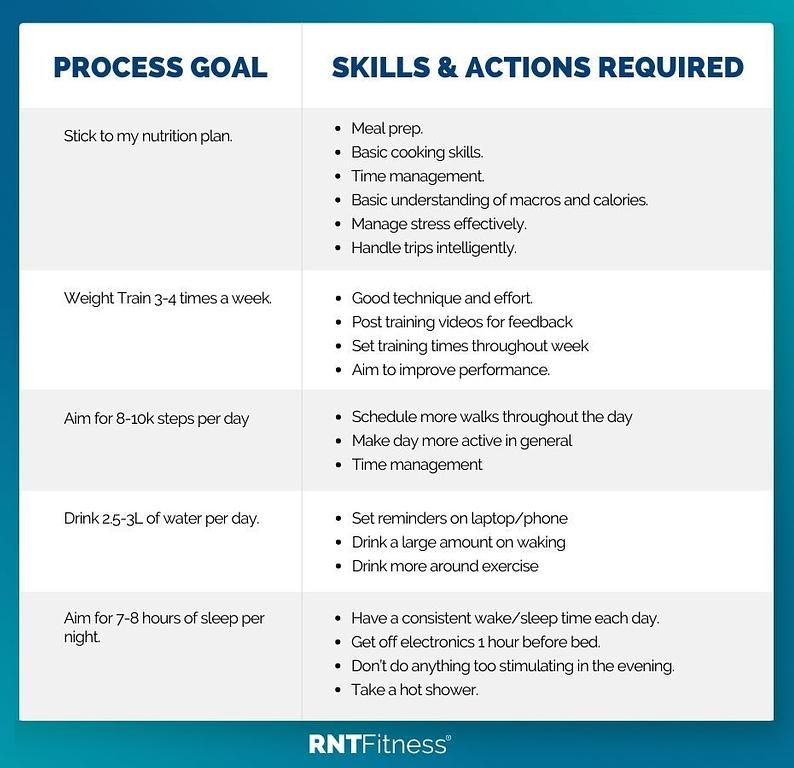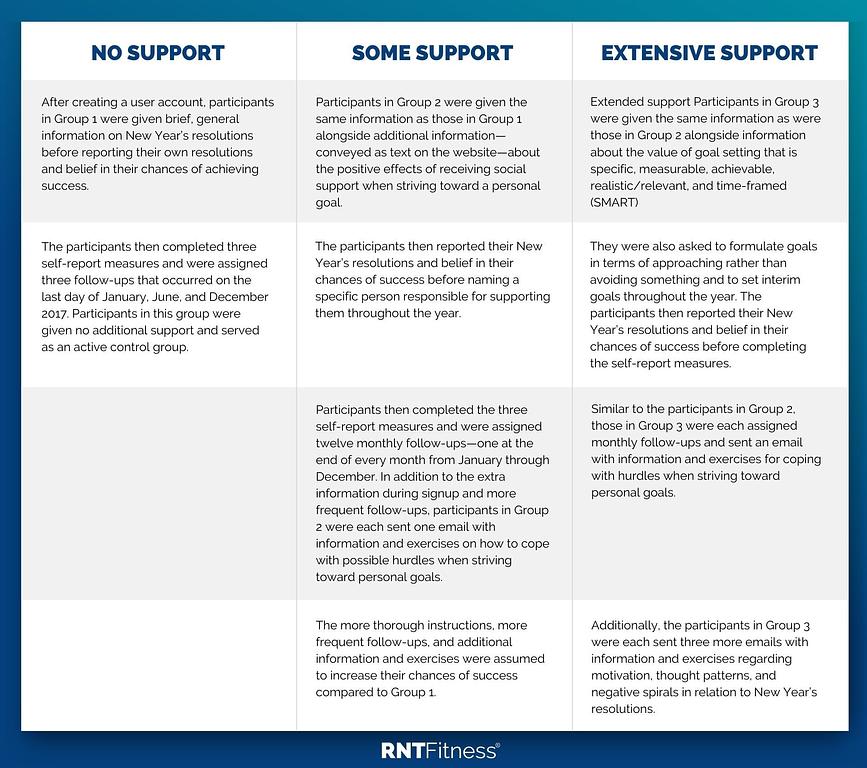Chunking
Regardless, it’s not uncommon for some to feel taken back by the weight target we have recommended even though we know that they have the capacity to achieve it with the right mindset, strategy and approach. Remember, we have done the same with many people just like you, meaning we will never set a target that we think isn’t achievable.
Chunking Example 1: Time Based Target
Chunking Example 2: Weight Based Target
Focus On The Process, Not The Outcome
- Eat in accordance with the recommended meal plan based on your goals.
- Train with weights 3-4 times a week with the goal of progressive overload in mind.
- Aim for 8-10k steps per day
- Aim for 2.5-3L of water per day.
- Aim for 7-8 hours of sleep per night.
PROCESS GOAL | SKILLS & ACTIONS REQUIRED

*Research Deep Dive: A large-scale experiment on New Year’s resolutions: Approach-oriented goals are more successful than avoidance-oriented goals

Achieving a goal is much more realistic with a strong support network that provides education, motivation, community and guidance on how to get there.
Approach-Oriented Goals vs Avoidance- Oriented Goals
Approach- Oriented Self Talk
Avoidance- Oriented Self Talk
By focusing on all the positive things you are adding to your life vs the things you think you need to completely give up can go a long way. On top of that, you continue reminding yourself of all the positive things you are experiencing because of the behaviours you have been implementing.
Putting It Altogether
- Set the goal: Be specific (weight and timeframe).
- Break the goal down into chunks.
- Be part of a support network that provides education, community, encouragement and guidance.
- Understand the processes required to achieve the goal.
- Work on improving the skills within each process goal.
- Take a more “approach-oriented” mindset.

.png)